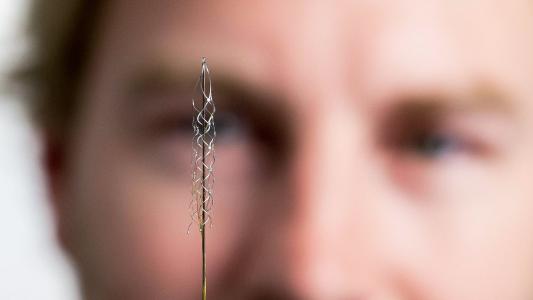If you want a stronger body, you might pick up weight lifting or start going on daily runs.
But what if you want a stronger brain, one with a better memory and problem-solving skills? Is it possible to exercise your mind the same way you might work out your muscles?
Advocates of brain training say it’s not only possible, but also relatively easy — all you need to do is spend a few minutes a day answering questions or solving problems in an app or video game, and you’ll be on your way to a stronger brain.
But while interest in brain training is skyrocketing — the amount of money spent on brain training programs quadrupled, from $475 million to nearly $2 billion, between 2012 and 2018 — many researchers decry the lack of scientific support for the industry’s claims that playing brain games regularly can do anything more than help you get better at the games.
“There is no evidence to show whether there’s a translation of the gains made within an app to everyday life,” Til Wykes, a professor of clinical psychology and rehabilitation at King’s College London, told WIRED in 2019.
Still, some scientists do suspect that brain training might be beneficial — but they have no idea who might benefit from it or how. Is it people already combating memory loss or those with no cognitive impairments? Are all brain games created equal, or do certain people benefit more from certain types of brain training?
To get to the bottom of this mystery — and potentially save a whole lot of people a lot of money — researchers at UC Irvine and UC Berkeley have launched the Online Memory Training Study.
For this new citizen science project, they’re looking for 30,000 adult volunteers willing to see whether brain training can improve their working memory — the brain system used to store and access information we only need to keep track of in the short-term.
After signing up for the study, each volunteer will be asked to fill out a questionnaire, which should take about 15 minutes. They’ll also take a short test that will serve as their baseline for the study.
After that, volunteers will need to complete 22 assessment and training sessions on their smartphone or tablet. The researchers ask that each volunteer complete at least two sessions daily and no fewer than 10 sessions in a week.
Our goal is to avoid a one-size-fits-all approach.
Jaeggi et al.
Three months after finishing this part of the study, the volunteers will be asked to complete one short follow-up session.
By including multiple approaches to brain training in the study — and having a large number of people participate in it — the researchers hope they’ll be able to figure out what characteristics might make a person most likely to benefit from a specific type of training.
“Our goal is to avoid a one-size-fits-all approach,” the researchers write in Scientific American. “Instead, we want to advance a new model based upon the premise that people are diverse in their cognitive strengths and needs, and therefore require the type of interventions that would serve them best.”
We’d love to hear from you! If you have a comment about this article or if you have a tip for a future Freethink story, please email us at tips@freethink.com.
